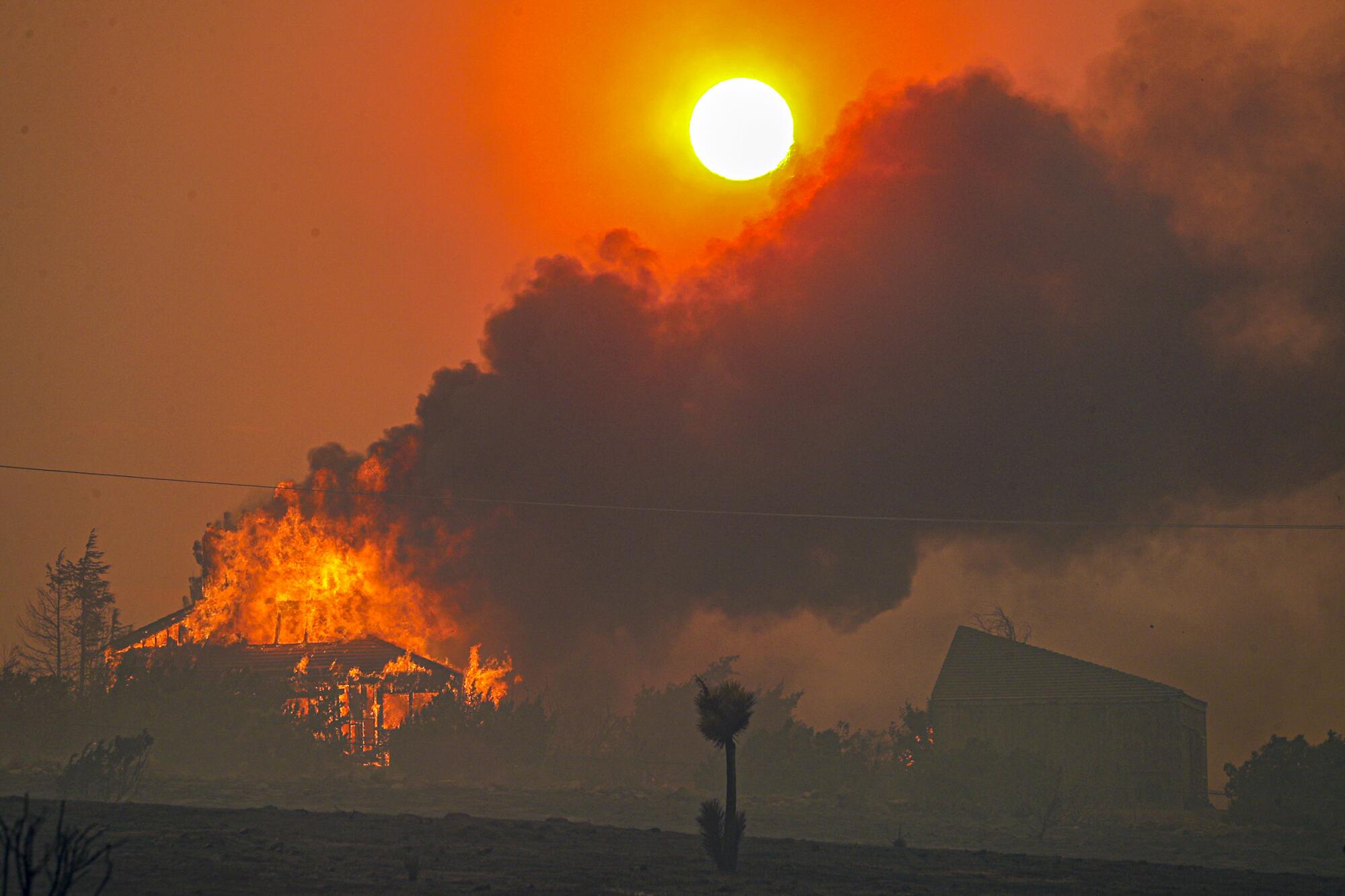
Roland Pagan on Saturday stood knee-deep in swirls of smoke on a mesa where the two-story home it took him nine years to build once offered commanding views of the desert flatlands below.
Almost exactly 24 hours earlier, Pagan, 80, had stood on a nearby hill and peered through binoculars, watching the house in Juniper Hills collapse in flames.
âThe ferocity of this fire was shocking,â he said, shaking his head in sadness. âIt burned my house alive in just 20 minutes.â
The Bobcat fire exploded Friday amid intense winds, burning homes in the Antelope Valley and spreading in multiple directions.
As of Saturday, the fire had burned more than 93,842 acres and was threatening some desert communities along Highway 138. The fire lines stretched across 30 miles of rough terrain on the northern flanks of the San Gabriel Mountains.
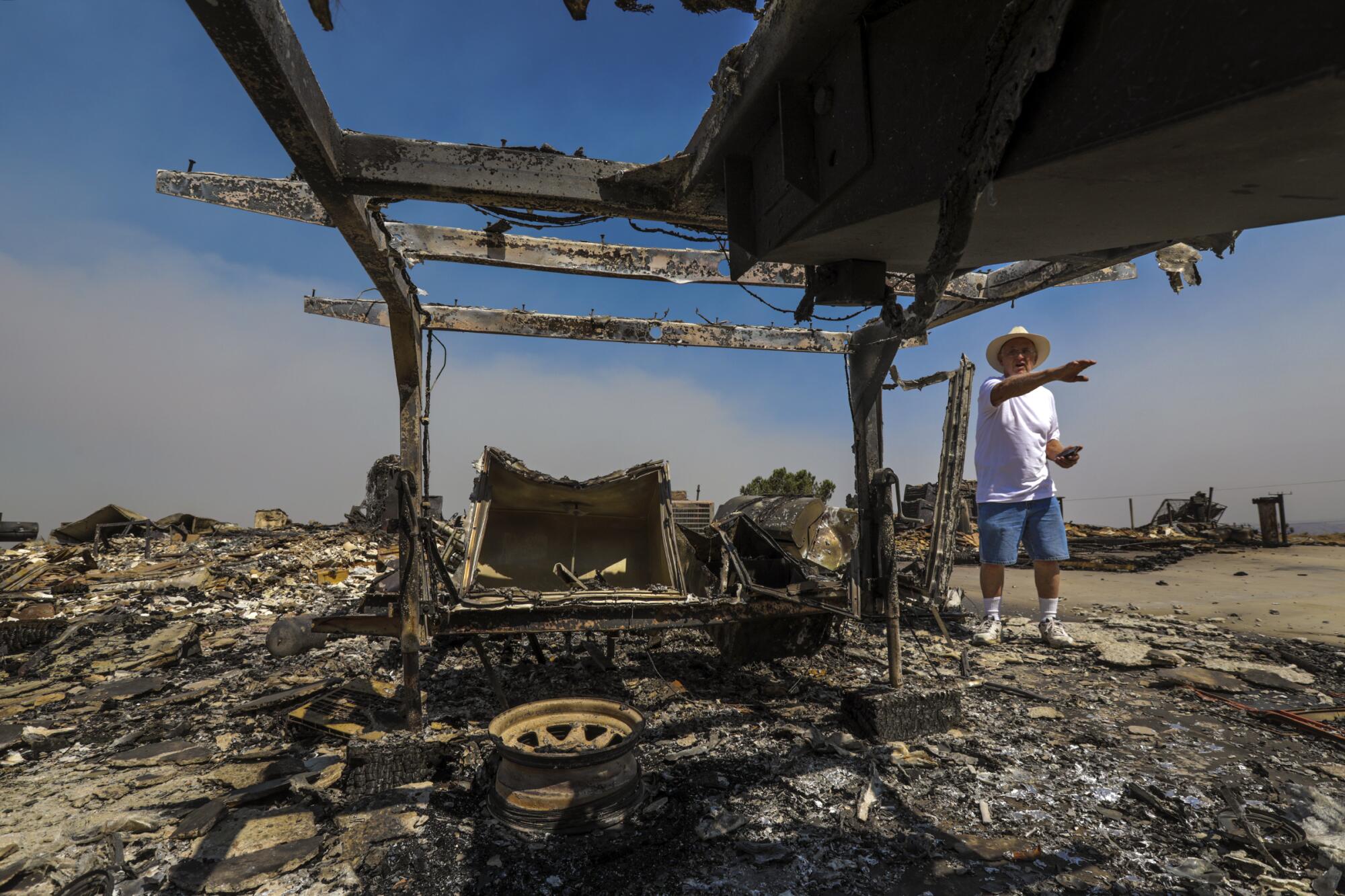
Pagan was struggling to take stock of his losses and figure out what to do next.
âHoly mackerel,â he mumbled to no one in particular as he strode through the smoldering ruins.
âItâs gonna take several days to come to grips with what just happened here,â he said. âIâm in shock.â
As he spoke, columns of smoke arose in the distance on all sides of his house, signaling property elsewhere that was catching fire.
âYesterday and through the night, the fire made a dramatic push due to the windy conditions,â Capt. David Dantic, public information officer for the fire response effort, said Saturday morning.
Several homes in the remote foothills community were lost, Dantic said. The extent of the destruction wasnât immediately clear.
âWeâll get a better assessment once our teams go out, but we were in an active firefight yesterday,â he said. He said firefighters were continuing to work to protect homes on Saturday.
Though the fire approached the high desert community of Valyermo, a Benedictine monastery there appeared to have escaped major damage.
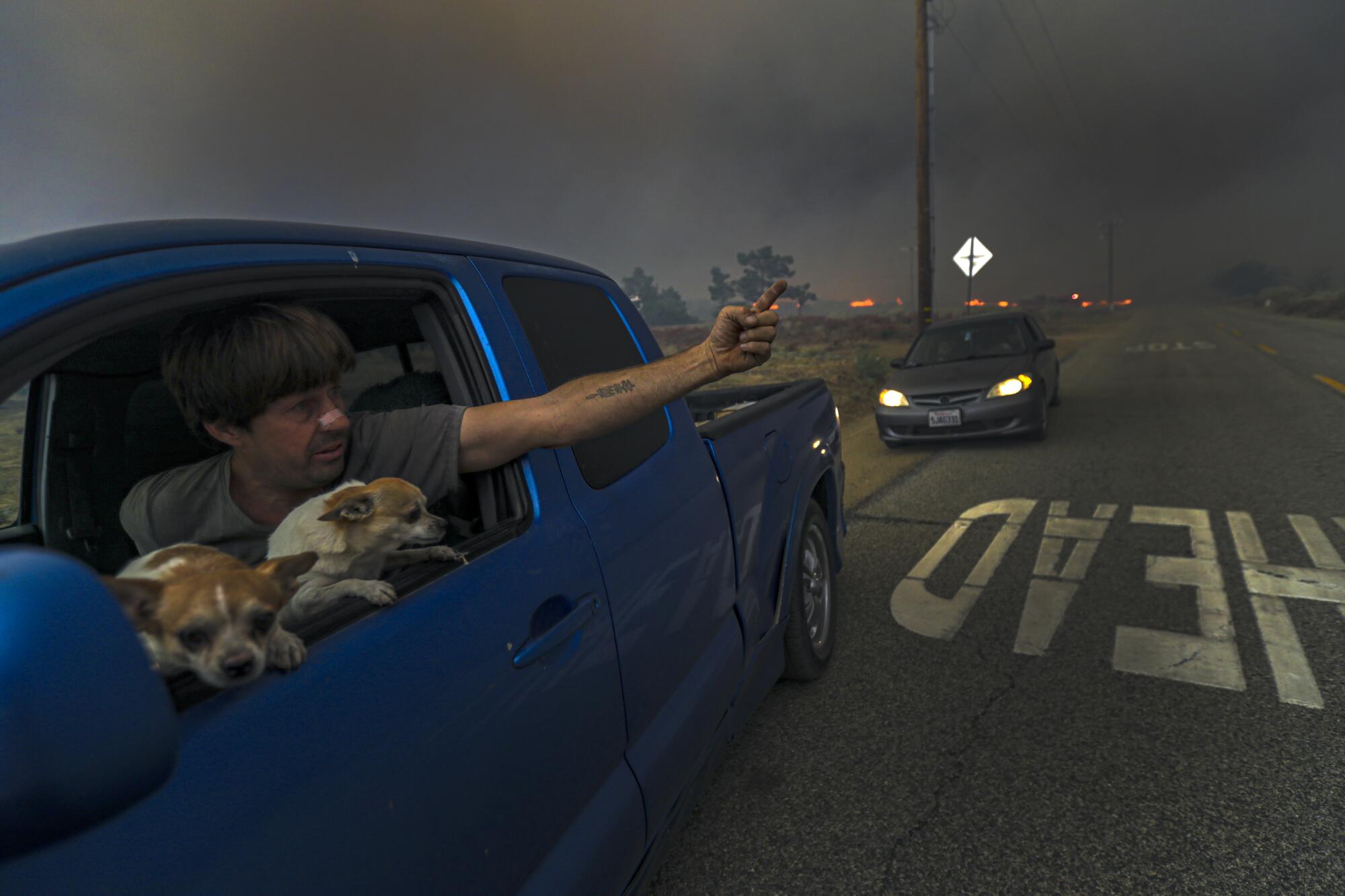
The fire spread rapidly onto the desert floor Friday as winds arrived. Some residents had to flee as the fire jumped around, hitting some homes but sparing others.
Flames tore through stands of yucca and juniper, leaving behind piles of ash resembling leopard spots and transforming the landscape into a smoky wasteland.
The fire was 15% contained as of Saturday, but fire officials said they had a tough weekend ahead with hot conditions and more winds forecast.
âWe are expecting another round of some pretty gusty south to southwest winds over the Bobcat fire this afternoon and into the evening hours,â said David Gomberg, meteorologist with the National Weather Service in Oxnard. The weather service was warning of an elevated fire weather threat both Saturday and Sunday due to the combination of wind and low relative humidity.
A high priority throughout the day for firefighters was monitoring the behavior of the wind, which was sporadic and ranged from stock still to rambunctious. Whenever gusts arose, there suddenly appeared more smoke in the air and more spires of dark smoke, indicating new blazes.
The fire more than doubled in size in just a few days, growing by nearly 20,000 acres from Friday to Saturday alone. Officials said the fire had been so challenging because it was burning in areas that had not burned in decades, and because the firestorms across the state had limited resources.
There are now more than 1,600 firefighters on the lines. They have relied on helicopters and water-dropping airplanes in dealing with heat, erratic winds, low humidity and flames sweeping across vast swaths of inaccessible mountain terrain.
Compounding problems for firefighters trying to defend lives and property in sparsely populated areas has been what L.A. County Fire Department Capt. Sam Bashaw described as a lack of responsibility among some residents to prepare for fires.
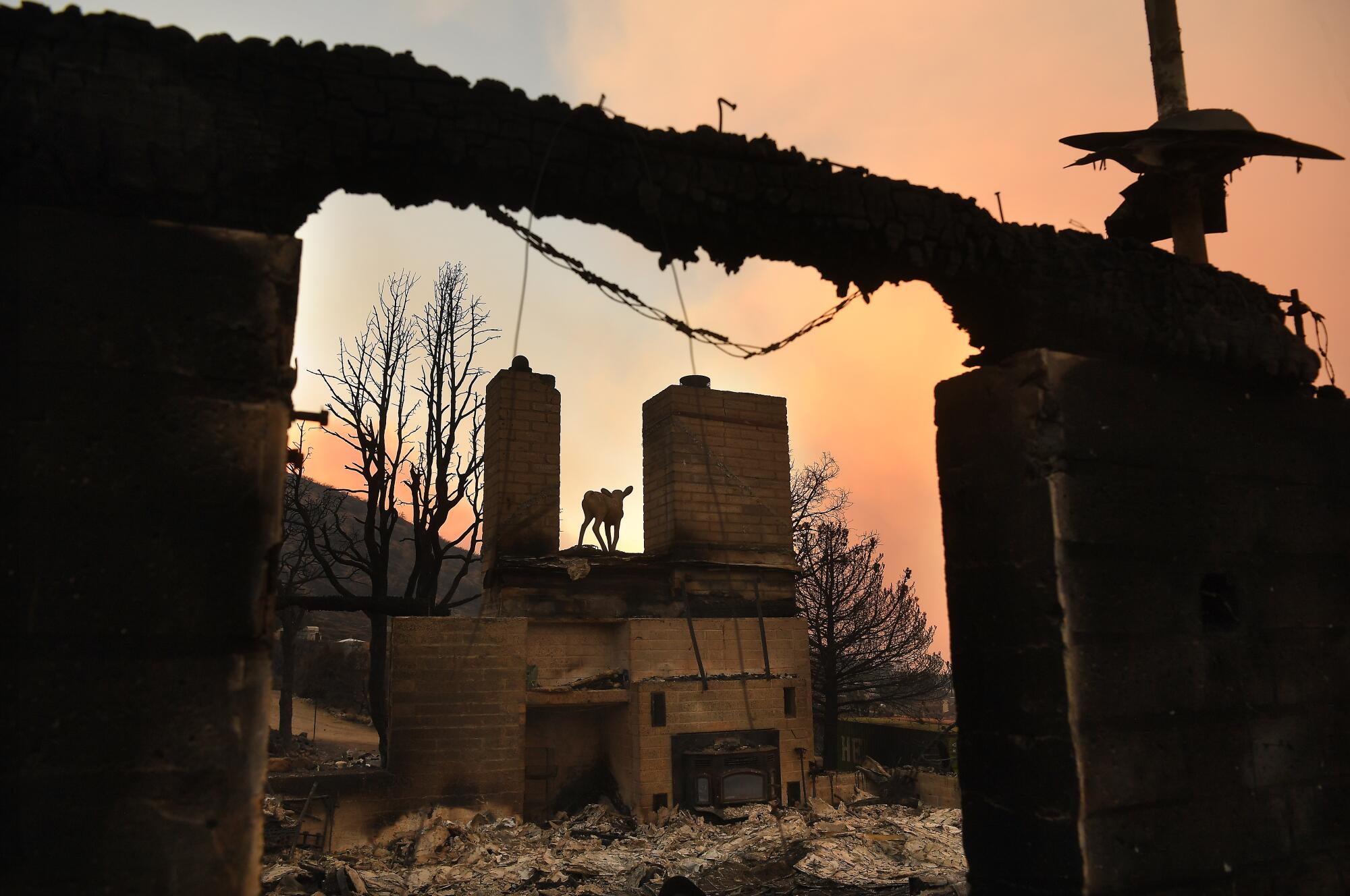
âThe price of living in a rural area comes with responsibility â be prepared for the worst,â he said. âDo they take that to heart? Absolutely not.â
The blaze is destroying forests and laying the groundwork for mudslides in some of the last refuges for federally endangered animals, including the southern mountain yellow-legged frog.
The fire burned through the Devilâs Punchbowl Natural Area, destroying the nature center, the Los Angeles County Department of Parks and Recreation said on Twitter. No animals or staff were hurt, and the wildlife sanctuary staff office was still standing, the department said.
Crews are trying to stop the blaze from marching east of Highway 39 and, to the west, are working to protect Mt. Wilson, topped by its namesake observatory as well as numerous communication towers. Firefighters have put a containment line around part of Mt. Wilson but are âstill not out of the woodsâ because hotspots could flare up, Dantic said.
There was also concern that wind could push the fire northeast toward the Wrightwood area, which remained under an evacuation warning Saturday.
At 2:30 p.m., the eastern edges of the fire were chewing through pine and oak forests about eight miles south of the San Gabriel Mountain resort town.
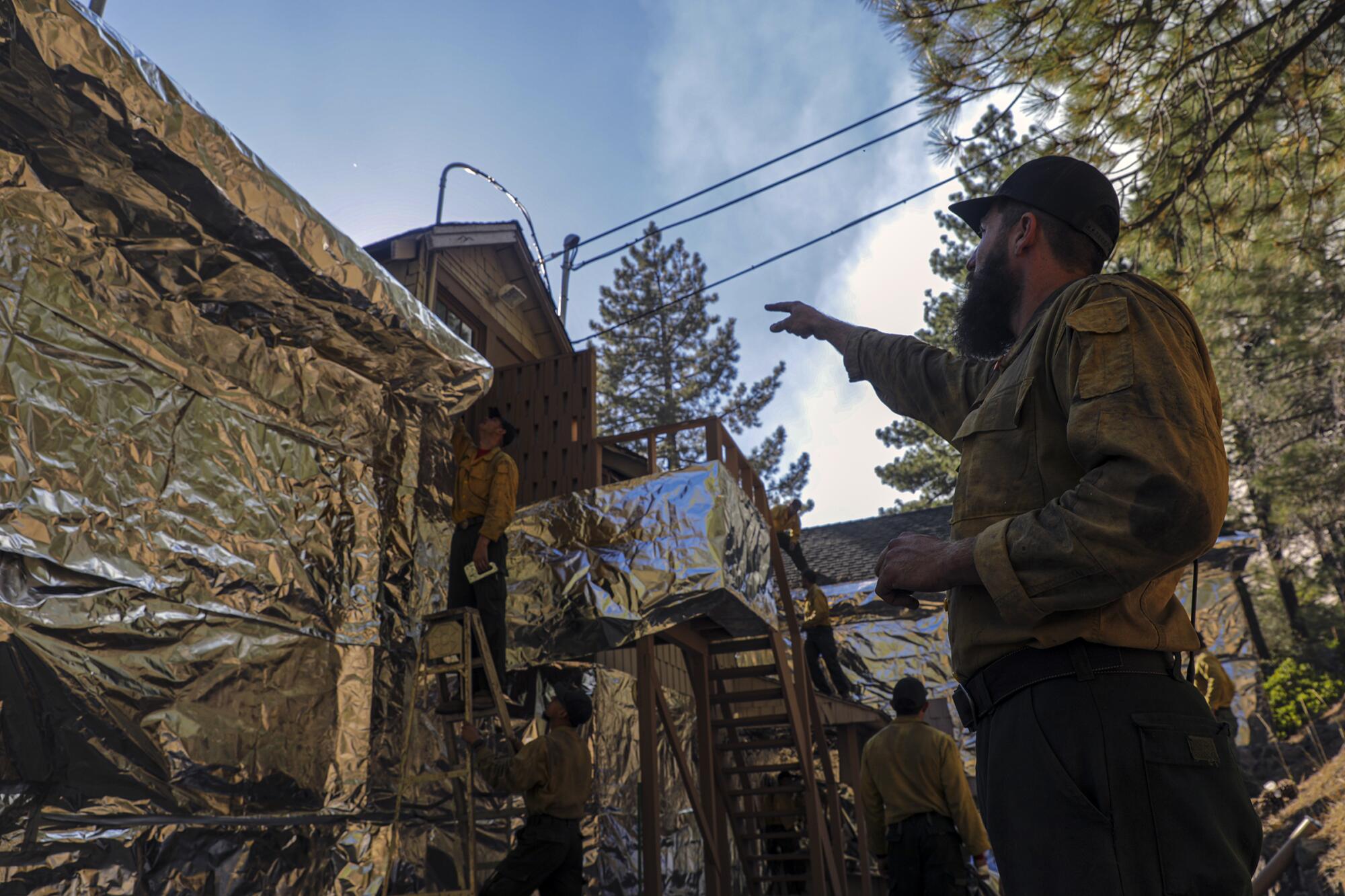
The town of about 4,000 residents sits at the bottom of heavily wooded Swarthout Valley and has been threatened many times over the decades by encroaching wildfire.
As of Saturday afternoon, however, it was business as usual with tourists ringing up purchases in gift shops and restaurants.
But firefighters at the U.S. Forest Serviceâs century-old wood-framed visitors center, four miles south of town, were not taking any chances.
There, a crew spent much of the day encasing the historic structureâs eaves, wood shingles and exterior walls in aluminum foil to deflect windblown embers.
âOur goal is to make sure we contain the fire, but fire is unpredictable, and it can do anything at any point and time,â Dantic said. âWe do have units strategically in place so we can stop this fire.â
He urged residents to heed evacuation orders and to be ready to leave if placed under an evacuation warning.
New evacuation orders were issued Saturday for the foothill areas south of 138th Street East, north of Big Pines Highway and Highway 2, west of 263rd Street East and east of Largo Vista Road.
Residents in northern foothill communities, including portions of Juniper Hills, Devilâs Punchbowl and Paradise Springs, were placed under evacuation orders earlier in the week as flames closed in on the area.
Orders were also issued for residents south of Pearblossom Highway, north of Big Pines Highway, west of Largo Vista Road and east of 165th Street East.
Fire crews have made significant progress on the southern edge of the fire, which jeopardized several foothill communities, including Arcadia and Sierra Madre. Evacuation warnings for Arcadia, Sierra Madre, Monrovia, Duarte and Bradbury were lifted Saturday afternoon, but the warnings remained in place for Pasadena and Altadena.
The blaze comes in the midst of an unprecedented fire season in California, with more than 7,900 wildfires burning over 3.5 million acres in the state since the start of the year, according to the California Department of Forestry and Fire Protection.
The fires have killed 26 people and destroyed more than 5,800 structures since mid-August, when a siege of dry lightning strikes sparked hundreds of blazes, some of which quickly spread through dry vegetation that was primed by a record-setting heat wave.
Experts say that climate change has played a role in the extreme conditions, as the gradual warming of the planet has accelerated as greenhouse gas emissions continue to rise.
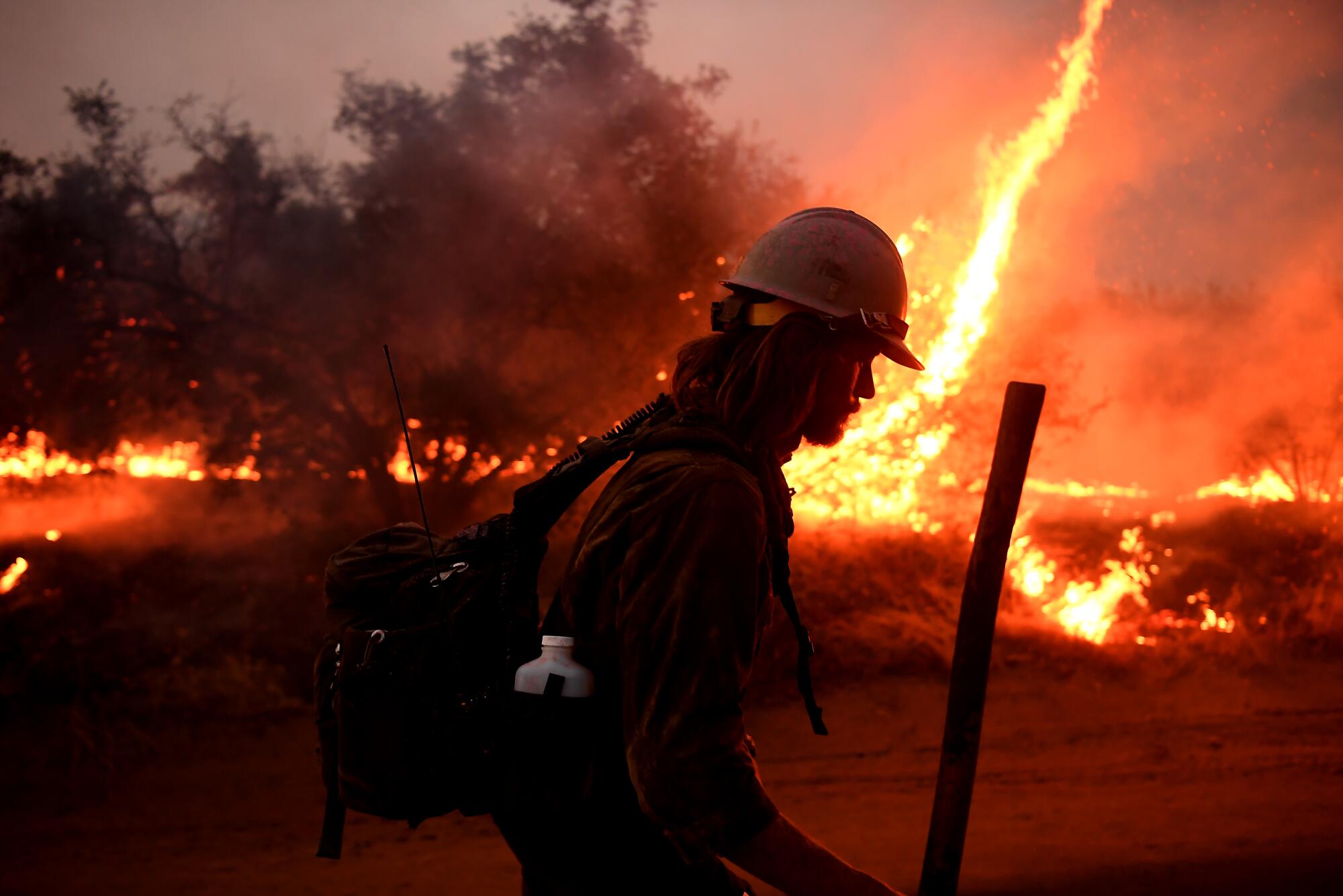
Crews have nearly contained several of the lightning-sparked fires that converged into massive complexes in Northern and Central California.
Crews also reported progress against several large fires burning elsewhere in the state but said weather conditions could pose a challenge this weekend.
The North Complex fire, which has killed 15 people and damaged or destroyed more than 1,450 structures in Butte, Plumas and Yuba counties, was at 289,951 acres and 58% contained.
Fire officials said they expected an increase in fire activity Saturday due to dropping humidity and warmer temperatures.
To the south, the 22,071-acre El Dorado fire was burning in San Bernardino County along Highway 38 and in the Angelus Oaks area, officials said.
The fire broke out Sept. 7 near Yucaipa and was 59% contained Saturday, down from 66% earlier in the week. Officials said it was caused by a smoke-emitting pyrotechnic device that was part of a gender-reveal party in a park.
Flames had destroyed at least four homes and damaged two others, and the fire was continuing to threaten more than 26,000 structures. A firefighter died while fighting the blaze earlier in the week, becoming the third firefighter to die while fighting Californiaâs wildfires this year.
More to Read
Sign up for Essential California
The most important California stories and recommendations in your inbox every morning.
You may occasionally receive promotional content from the Los Angeles Times.












